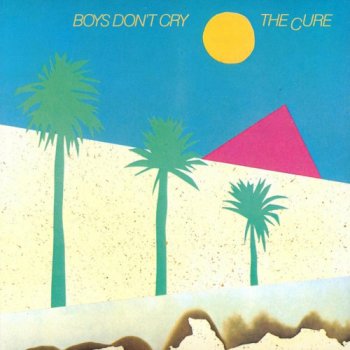
Download zip file.
Artist: The Cure
Album: Boys Don't Cry
Released: August 1980 (US release date)
Producer: Chris Parry, The Cure
Genre: Post-Punk, New Wave
America Gets The Cure
The Cure's tight and punchy debut still sounds great nearly 40 years later.
by Paul Martz, October 12, 2016The Cure formed in Crawley, West Sussex, UK, in the mid-1970s. Their debut album, Three Imaginary Boys, was released in the UK on May 8, 1979, on the Fiction Records label. Fiction re-packaged the album as Boys Don't Cry primarily for release outside the UK, with a different track listing and album art.
Steve Parry, perhaps better known for the '60s mod sound he created for The Jam and Paul Weller, produced both versions of the album. In Boys Don't Cry, Parry creates a crisp, tight-as-a-knot sound that adds a breath of fresh air to the typical 1980 post-punk echo-guitar drone. Parry packs 13 songs onto this short 33-minute album, with only a handful of songs lasting longer than three minutes. It's more typical of a pop album from 1964 than a post-punk album from 1980. The tracks change fast, like you're being punched in the face.
Boys Don't Cry opens with Jumping Someone Else's Train, an explosive, brooding ditty with a percussive coda. It's followed by the poppy title track Boys Don't Cry. Since the release of the movie The Wedding Singer, it's impossible for me to hear this without picturing a broken-hearted Adam Sandler. In the song Accuracy, Robert Smith's pithy lyrics "kill you without trying". Side B opens with Killing An Arab, a literary nod to French author Albert Canus' novel The Stranger. If you turn up the volume enough, the guitar interlude in World War will make your hair stand up. Some tracks are razor sharp and sassy, such as Plastic Passion and Object. Others, like Subway Song and Another Day, are melodic and haunting harbingers of the three albums to follow. The final track, Three Imaginary Boys, is moody enough to be on their following album, Seventeen Seconds—if only they had boosted the bass and added a synthesizer and fog machine.
Parry produced several other albums for The Cure, including the follow-up, Seventeen Seconds. Along with Faith and Pornography, these three albums stand alone stylistically thanks to a gloomy, haunting, and depressing—but undeniably danceable—'80s synth-punk sound that resulted in heavy underground dance club and college radio airplay. This change in style was almost certainly due to replacing bassist Michael Dempsey with Simon Gallop. The departure of Gallup in late 1982 was followed by the release of The Walk, mini-album, with its minor hit Let's Go To Bed. The Walk marked The Cure's third stylistic era and set them on the road to packing arenas around the globe.
The Cure were one of my favorite bands in the early 1980s, and I was fortunate to see them in concert at Ann Arbor's Michigan Theater on November 11, 1984. That was about the peak of my infatuation with this band. I enjoyed The Top less than their previous albums, in spite of the near-hit The Caterpillar. I had the Head On The Door CD, but sold it. I thought they had jumped the shark. Ironically, this was the point at which they surged in popularity in the US.
Next: Doll By Doll - Remember. Previous: Cheech And Chong - Santa Claus And His Old Lady 7" Single. All Album Reviews.
